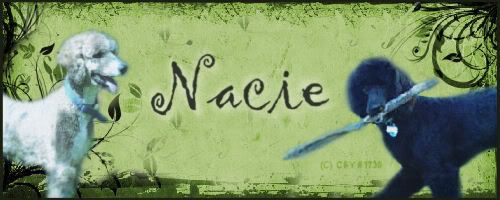Howdy, Stranger!
It looks like you're new here. If you want to get involved, click one of these buttons!
10x4 Ecanho Illume Hybrid (Personal Breed) Ended
I have decided to auction off one of my Ecanhos (maybe two depending on bids).<br><br>I am not adding a link to the dog because the winner may pick whichever unnamed dog he/she wishes from this kennel: <a href="http://virtualpups.com/index.php?r=kennel/view&id=474206"; target="_blank" class="bb-url">http://virtualpups.com/index.php?r=kennel/view&id=474206</a><br><br>If you want to see dogs with pictures; please visit this kennel: <a href="http://virtualpups.com/index.php?r=kennel/view&id=350246"; target="_blank" class="bb-url">http://virtualpups.com/index.php?r=kennel/view&id=350246</a><br><br>Dog will come neutered unless winner has sold/given/trusted me with one of their own intact PB’s. <br><br>I reserve the right to end without selling. <br>BIN is to keep bids going – but of course I would love you to BIN the dogs!<br><br>Ending Date: Will be added later.<br><br>SB: 1 mil<br>MB 1 mil<br>HB: 25 mil by Aziu <br>BIN: 50 mil<br><br><span style="font-size:150"><span style="font-weight:bold">Breed Info . . .</span></span> <br><br><span style="font-weight:bold">Breed Name:</span> Ecanho Illume Hybrid [(ee-can-oh)]<br>Group: seeker<br>Height: 61 cm<br>Weight: 27 kg<br><br>Native Location: Bermuda<br>First Discovered: 1612 by English settlers<br>Myth: In the 1500's, when British and Spanish ships sailed past the islands, sailors reported odd beams of light illuminating the large rocks that scattered the shoreline. It is believed that the Ecanho assisted vessels in manoeuvring around the rocks, to avoid wrecking. It is for these reports that they were eventually given the nickname of "The Lighthouse Dog". <br><br><span style="font-weight:bold">Abilities</span><br><br>The Ecanho possesses the ability to absorb natural light through his or her eyes, storing the power in features called bulbs. They use the power in their special activities, such as hunting or in courtship rituals. <br><br>Most impressive is the ability to remove all light from the visible area. This leaves the area in ultimate black, allowing them to escape from threats completely undetected. While hunting, the stored power can be used to temporarily camouflage their fur to match the surroundings. <br><br>Absorbed light can also be used to woo potential mates or used for entertainment. Packs will congregate at mineral locations, using complex angles to refract light beams through gems. These stones allow for Ecanhos to bond over spectacular, visually pleasing rainbow hues.<br><span style="font-weight:bold"><br>Appearance</span><br><br>Ecanhos are well built, muscular canines. They have a sleek, slender body with a tight stomach and deep chest. Their tail is fanned, and they have some light fluff on their chest and rear. As adults, they measure between 22 and 26 inches at the shoulder, and weigh in between 60 and 65 pounds.<br><br>Pups are born black to allow for concealment in the den. Around four months of age, their baby fur sheds to reveal their true color. Acceptable colors include a chocolate, red, or seal base, and they may have a wide variety of rust, liver, or red markings. Any trace of white is an extreme fault, as it doesn't allow them to properly absorb or distribute light. Eye colors range from hazel, honey, amber, or green; they are never blue or dark brown. The paw pads reflect the true eye color. For example, a green eyed dog will have green paw pads.<br><br>From the time that pups are born to the day before turning two years old, Ecanhos have an extended bulb to store absorbed light. When the dog reaches two years of age, the extended bulb withers and falls off, exposing a permanent bulb in the skull. <br><br><span style="font-weight:bold">Reproduction</span><br><br>While Ecanhos live in pack-like structures, mates are lifelong partners, and they never reproduce with another pack-mate. Occasionally the bond between mates is so strong that the separation is overwhelming, resulting in deaths of broken hearts. Old observations also suggest that, despite infertility in one or both partners, the mates will continue their lives together until death.<br><br>Every May, the two year olds gather along the beach in search of a suitable mate. Using their power bulbs, emotions, and vocal abilities, males attempt to woo attractive females. Like many other species, males are sometimes forced to fight for the female of their choice. These battles rarely result in death, but torn ligaments or broken bones are common. Unlike other species, the female is given the final decision of her mate.<br><br>Females will go into heat once per year until they are ten years old. Typical litter size is between one and three pups. Mothers stay with her pups at all times, so it is up to the fathers to feed their family. Most litters don't come out of the den until they're five weeks old, and they aren't allowed to wander far until they're twelve weeks old.<br><br><span style="font-weight:bold">Communication</span><br><br>It has been observed that these dogs can communicate by using clicks, whistles, and other sounds similar to those of whales and dolphins. Both males and females use these sounds to create songs, which they sing during courtship rituals, hunting, playing, and travelling. <br><br>Some records indicate friendships between Bottlenose Dolphin pods and the dogs in the original island territories. Old mariners have reported seeing dogs and dolphins swimming and playing together along the shore. Local legends suggest that Ecanhos descended from dolphins, rather than from other canines. <br><br><span style="font-weight:bold">Diet</span><br>Due to the limited variety of wildlife in their native island, the Ecanho frequently consume frogs, sea turtles, hermit crabs, and fish. In extreme cases, Ecanhos resorted to hunting Man of War Jellyfish. While the venom won't kill an adult Ecanho, it is 100% fatal in those under one year of age. <br><br>After Bermuda was visited by foreign ships in the 1600's, the island became infested with black and brown rats. These pests are an easy source of food, especially for younger Ecanhos.

Comments
Artists! Submit your work to the VP Lineart Imagebase!
Artists! Submit your work to the VP Lineart Imagebase!
Artists! Submit your work to the VP Lineart Imagebase!
Artists! Submit your work to the VP Lineart Imagebase!
Artists! Submit your work to the VP Lineart Imagebase!
Artists! Submit your work to the VP Lineart Imagebase!